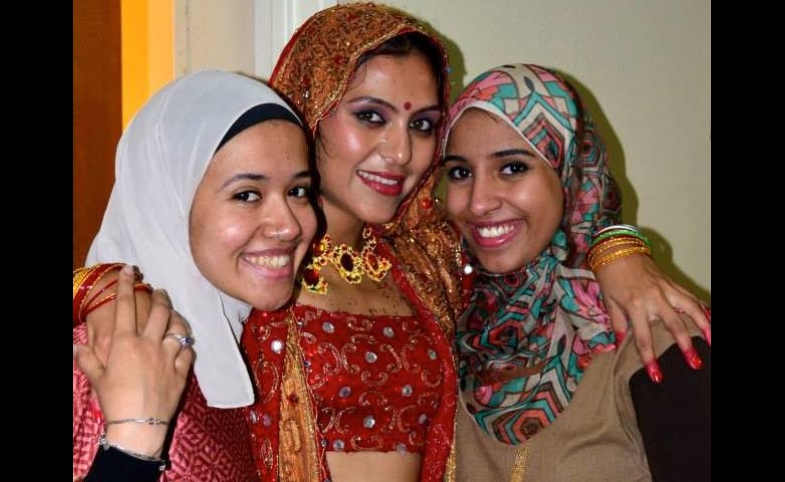The outbreak of the COVID-19 pandemic has redefined conventional forms of social interactions and slowed down the global economy at large. A number of countries, across the world, continue to enforce lockdown and quarantine...
KEEP READINGThe CPD Blog is intended to stimulate dialog among scholars and practitioners from around the world in the public diplomacy sphere. The opinions represented here are the authors' own and do not necessarily reflect CPD's views. For blogger guidelines, click here.

Not Simply a Festival: Looking Beyond India by the Nile
This CPD Blog was submitted by Ambassador Navdeep Suri and Second Secretary Abu Mathen George from the Indian Embassy in Cairo.
For a few years now, Spring in the Arab world comes with a number of political connotations that have now become part of standard vocabulary. In Egypt, amidst constant political change, we thought of infusing a dose of Indian culture into this Spring – a festival of arts and music that would arrive seasonally from the East. The idea was conceived in 2013, and the first edition of the festival turned out to be resounding success, with enthusiastic responses from different walks of life, and active collaboration with Egyptian artists. By the end, the event was billed as the largest foreign festival in Egypt since the 25 January Revolution. In 2014, the India by the Nile festival was even bigger, with more than 13 different events spread across three different governorates. Every event of the festival, whether it was the Bollywood musical, the classical Indian dance Kathak or the conversation between writers, received tremendous responses.
One of the principal objectives of the festival, along with presenting Indian culture in all its myriad forms, was to establish lasting relationships between artists and performers from both countries - to provide a platform for them to collaborate on their work and to share experiences. What had been a seed of an idea last year blossomed in unexpected ways - the Bollywood workshop at Medan Hanager attracted some six hundred people, of all age groups, and the talented dancer Gilles Chuyen even visited the Awladi Orphanage to conduct a workshop for the children there. A leading trainer from India, Puneeta Roy held a workshop with children of the New Horizon school on the topic of Being HuMan. One of India’s most famous cartoonists, Sudhir Tailang collaborated with the Egyptian Caricature society – overcoming barriers of language and politics, both sides talked and worked on common issues affecting their countries. The Rajasthani folk music group even stayed back after their event to participate in the Drums Festival being held in Cairo.
Two particular events stand out as symbols of what future collaboration between the two countries in the cultural domain could look like. On a windy April evening in Cairo, the Embassy honoured eleven Egyptian and Indian women for excellence in their respective fields, from diplomacy and arts to business and government. These ‘Women of Substance’ took home with them not only the Indian saris they had so gracefully accepted to wear, but the belief that Indian women stood shoulder to shoulder with them in facing common challenges in their societies. The conversations that began that night would carry on till the final event of the festival – Words on Water – in which a galaxy of leading intellectuals from both countries would debate ‘Societies in Transition’ – notions of freedom of expression and satire, women’s rights and patriarchy, and the difficulties of doing business in emerging economies. These conversations built friendships, away from the glare of the media or the formalities of Government, and will continue even as the festival becomes a valuable memory until its next edition.
From a public diplomacy platform, the responses to the festival were overwhelming. The Bollywood crew performed a flash mob at the airport on their arrival setting the tone, followed by a Facebook party with some 600 young Egyptians. The media coverage was unprecedented. More than 90 articles in newspapers and magazines, around 130 on online editions appeared about the different events. The festival itself received some 5 hours of prime time television over the course of its three weeks, with news reports on major state and private run channels. The number of followers of the Indian Embassy’s facebook page even jumped from 30,000 to 70,000 during its course. Approximately 10,000 people came in touch with India by the Nile, and brought home with them a memory of India. But perhaps the most important response for us were the questions at the end: “When is the next festival? What are you planning?”
Many years ago, when the Nile used to flood and then recede, it would leave the land fertile for a fresh season of planting and growth. As the second edition of India by the Nile closes, this ancient analogy comes to mind – a seasonal festival of arts and culture that leaves in its wake enduring friendships, lasting partnerships and the continuing belief that while the cultural relations between India and Egypt may be historic, its future is made in the present.
Visit CPD's Online Library
Explore CPD's vast online database featuring the latest books, articles, speeches and information on international organizations dedicated to public diplomacy.
POPULAR ARTICLES
-
November 3
-
November 5
-
November 13
-
November 25
-
December 17
Join the Conversation
Interested in contributing to the CPD Blog? We welcome your posts. Read our guidelines and find out how you can submit blogs and photo essays >.













